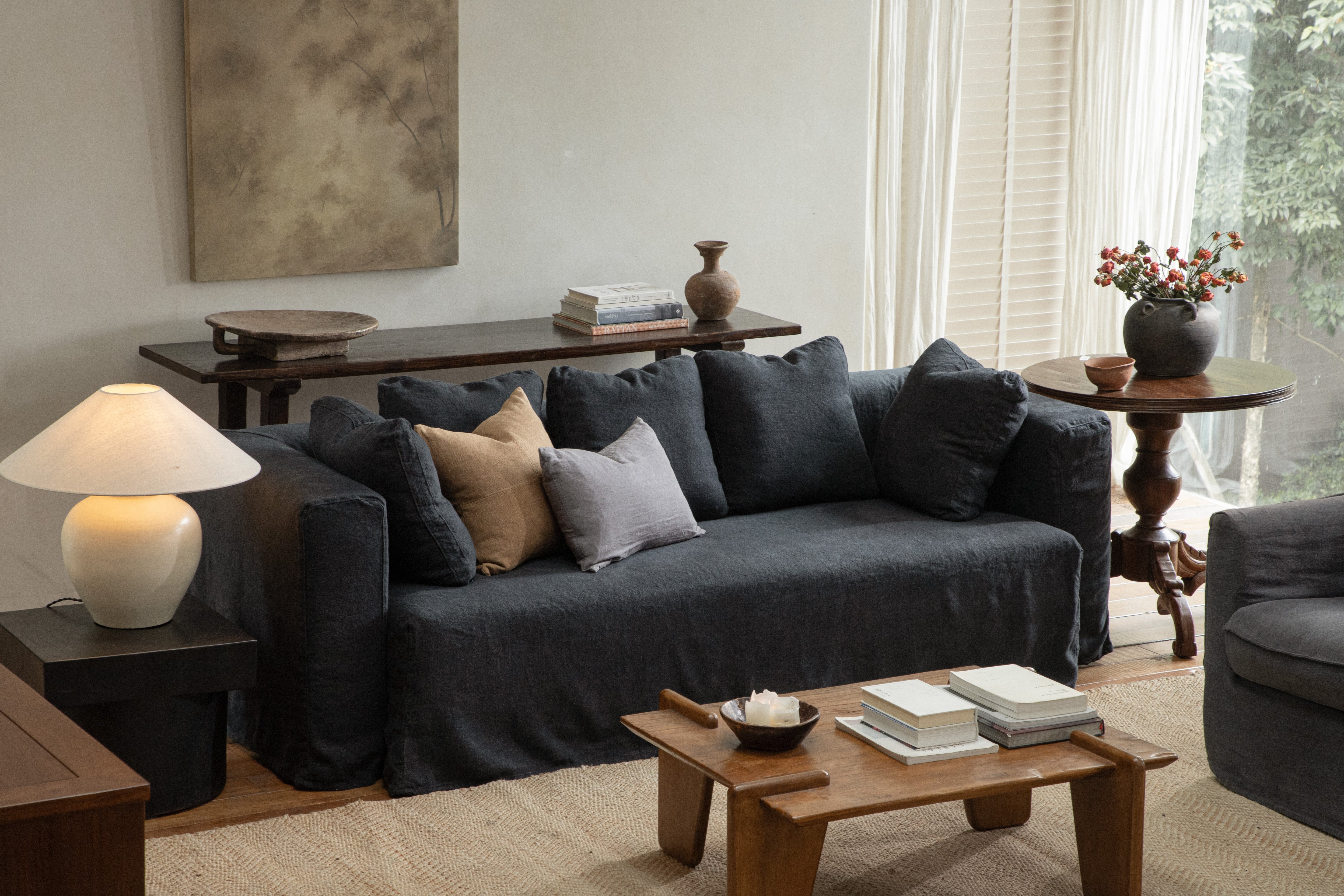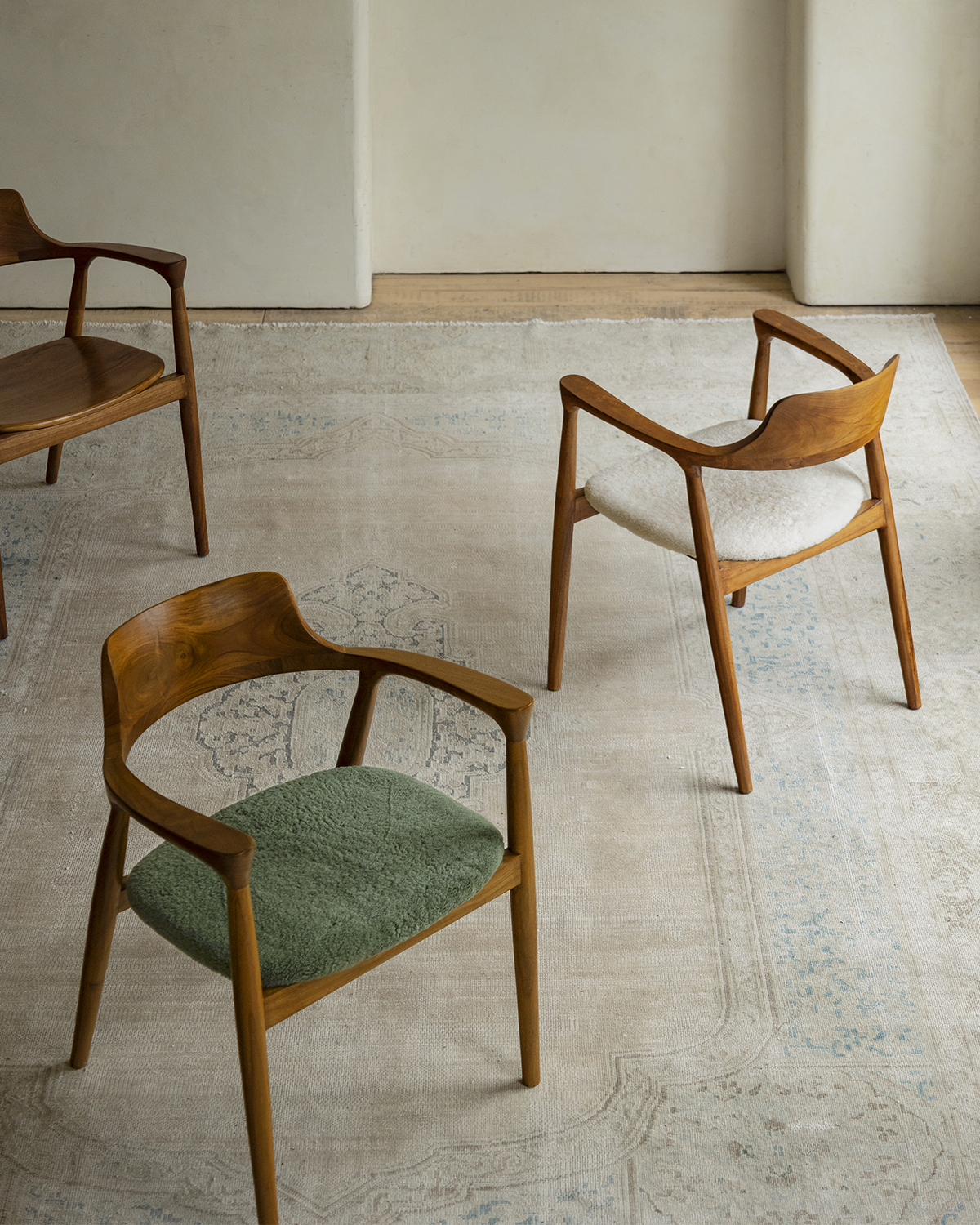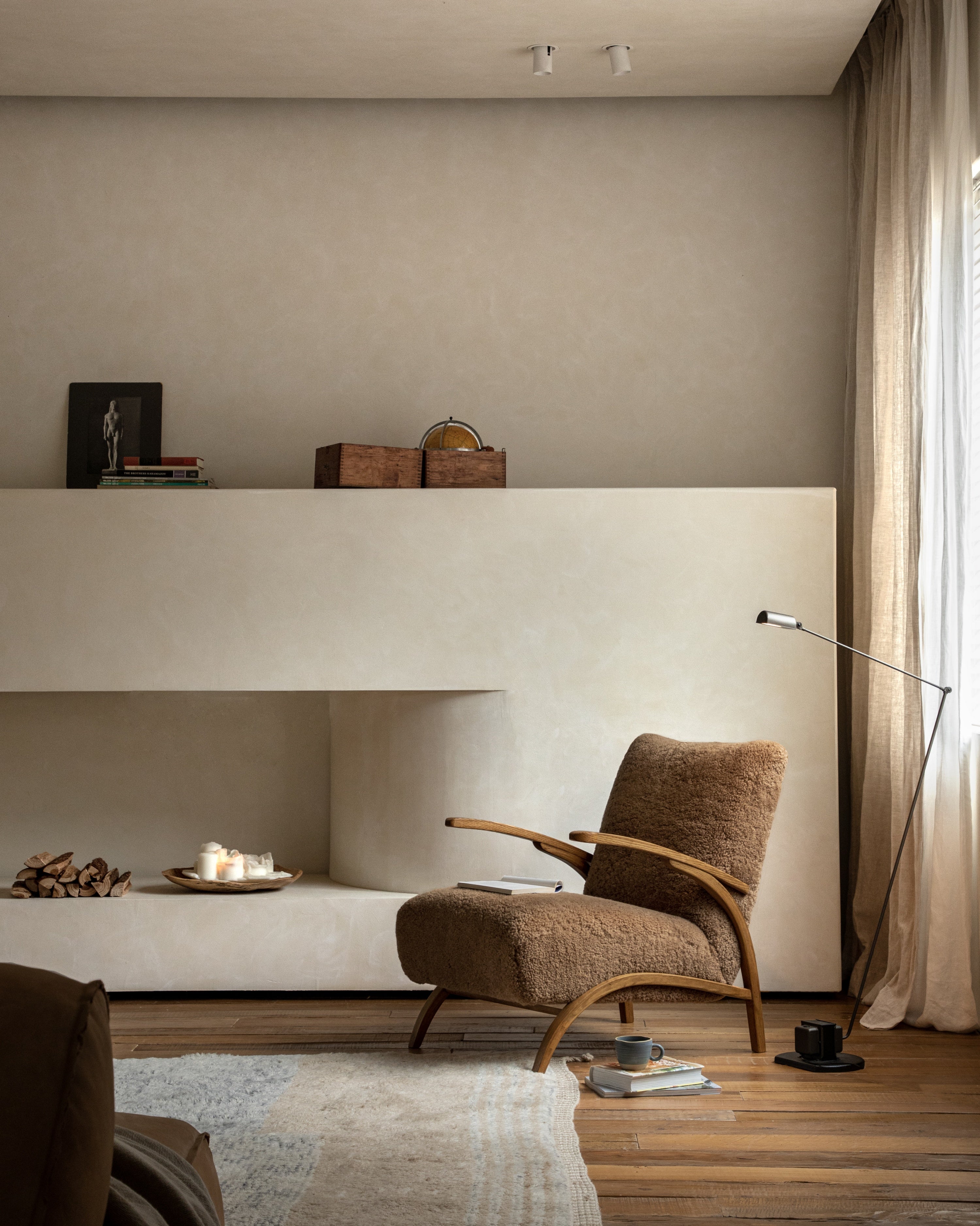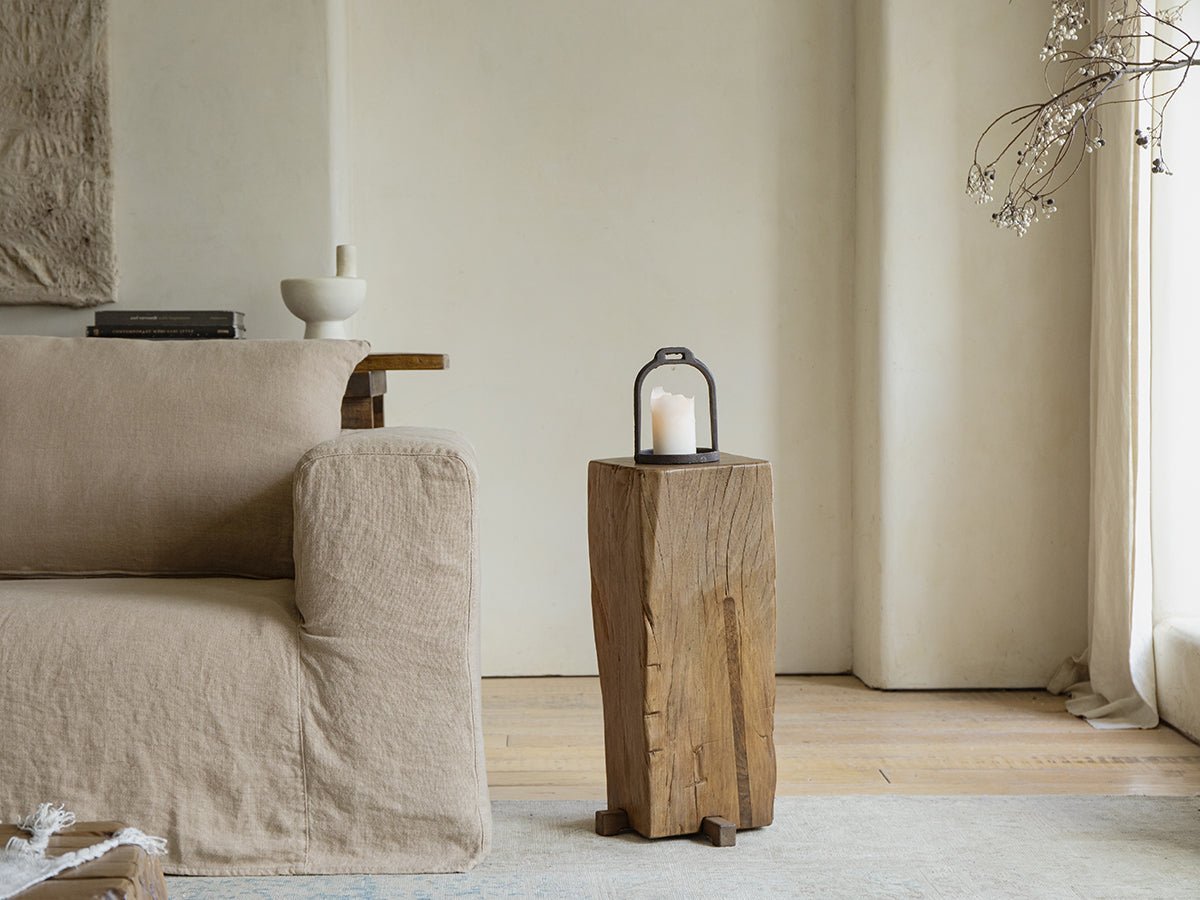Article: How to Pet-Proof Your Sofa: 5 Easy Ways to Keep It Clean and Scratch-Free

How to Pet-Proof Your Sofa: 5 Easy Ways to Keep It Clean and Scratch-Free
There's nothing better than cozying up on the couch with your pet after a long day. That moment of comfort together is priceless and an important part of home life. Even though we love our pets, having them on our favorite couch can sometimes bring along some not-so-cute things, like stray hair, muddy paw prints, and the dreaded scratch marks.
The following signs often make us question whether it is possible to have a lovely, clean home and a cherished pet that is part of the furniture. Here are some common problems you might run into when trying to keep your couch looking its best.
1. Use Covers and Throws for Easy Sofa Protection
By physically separating your pet from the upholstery, you can protect your sofa quickly and effectively. This simple method prevents dirt, fur, and tiny scratches, making cleanup easy.
- Slipcovers: These are full covers designed to fit over your entire sofa. They come in various styles and materials, transforming the look of your couch while offering complete protection. Many are machine-washable, making them an excellent choice for a truly pet-proof sofa.
- Sofa Throws and Blankets: For a more flexible approach, strategically placed throws or blankets can work wonders. Drape them over your pet's favorite sleeping spot on the couch. Choose durable, tightly woven fabrics that are easy to shake off and toss in the wash. This method is great for protecting a specific area of your fabric sofa.
-
Pet-Specific Protectors: These products are often made from waterproof or highly resistant materials, designed to catch spills and resist claws. They come in various sizes, from small mats for individual cushions to larger covers that drape over the entire seating area. Using a physical barrier significantly cuts down on direct contact, saving your sofa from daily grime. This helps keep your furniture looking newer longer, reducing the need for constant deep cleaning.

2. Keep Your Pet and Your Sofa Clean
Regularly cleaning your pet and sofa reduces filth, fur, and allergens on your furniture. A consistent routine keeps tiny concerns from becoming big ones, keeping your home clean. This method makes dog/cat sofas easy to clean.
- Regular Pet Grooming: Brushing your pet regularly, especially if they shed a lot, significantly reduces the amount of fur that ends up on your furniture. For dogs, a quick paw-wipe after walks can prevent mud and dirt from reaching the sofa.
- Routine Sofa Cleaning: A weekly vacuuming session, using an upholstery attachment, is highly effective for removing loose pet hair and dander from your durable sofa. For spills or accidents, prompt spot cleaning with a pet-safe cleaner is crucial to prevent stains from setting.
-
Quick Checks and Wipes: Keep a lint roller or a damp cloth handy for quick touch-ups. A few minutes of effort daily can prevent hair buildup and keep your sofa looking tidy. These simple cleaning habits make a big difference in the cleanliness of your furniture and the overall freshness of your home. It's a vital step to prevent pet hair on sofa surfaces.
3. Train Your Pet with a Pet-Friendly Sofa in Mind
Training is crucial to furniture protection. You can gently discourage your pet from scratching or lounging by educating them where they can be and offering tempting alternatives. It promotes polite coexistence with your pet-friendly sofa.
| Strategy | What It Involves | Why It Works |
|---|---|---|
|
Create "Yes" Zones |
Establish designated comfy spots for your pet, like a soft bed or a cozy mat, placed near but not on the sofa. |
Pets seek comfort. If their own bed is more appealing and consistently rewarded with treats and praise when used, they'll naturally choose it over the sofa. |
|
Consistent Rules |
If your rule is "no pets on the sofa," everyone in the household must enforce it every time. |
Inconsistency confuses pets. Clear, unwavering boundaries help them understand expectations, reinforcing where they are permitted to relax. |
|
Positive Reinforcement |
Reward your pet generously with treats, praise, or their favorite toy when they choose their designated spot. |
Positive reinforcement makes the desired behavior (staying off the sofa or using their bed) a rewarding experience, encouraging them to repeat it. This is key for how to protect sofa from pets. |
This redirect strategy is about teaching your pet new habits, not punishing them. It takes patience and consistency, but the result is a well-behaved companion and a protected sofa.
4. Manage Pet Claws to Prevent Scratching
Cats and dogs scratch to maintain their claws and mark territory. Instead of suppressing this instinct, redirect it to appropriate surfaces. This makes pet-proofing a sofa easier without harsh methods.
- Regular Nail Trims: Keeping your pet's nails trimmed short is the simplest way to reduce potential damage. For cats, trimming prevents their claws from getting too sharp or snagged on fabric sofa threads. For dogs, shorter nails are less likely to scratch upholstery or floors. If unsure, a vet or groomer can demonstrate proper technique.
- Provide Scratching Posts (for Cats): Cats need to scratch. Offer a variety of scratching posts—vertical (sisal rope) and horizontal (cardboard)—placed in prominent areas, especially near the sofa where they might be tempted to scratch. Ensure posts are sturdy and tall enough for a full stretch.
-
Paw-Friendly Toys and Chews (for Dogs): For dogs who chew, provide durable chew toys to redirect their gnawing instincts away from sofa legs or cushions. This is a practical aspect of pet-friendly furniture tips. Addressing your pet's natural needs and providing suitable alternatives can significantly reduce damage to your furniture. It's about channeling their instincts constructively.
5. Use Gentle Scent or Texture Deterrents
It may take some persuasion to keep pets away from some areas. Soft sensory deterrents can make your pet less interested in your furniture without harming them. These strategies use scents or textures that pets detest to get them to relax elsewhere.
- Scent-Based Repellents: Many pets dislike the smell of citrus. A homemade spray made from diluted lemon or orange essential oil (always ensure it's pet-safe and test on an inconspicuous area first) can be lightly misted on the sofa. Commercial pet repellent sprays are also available, often using natural odors unpleasant to animals but undetectable or mild to humans.
-
Texture Deterrents: Pets tend to avoid unstable or uncomfortable surfaces. Temporarily placing crinkly foil, double-sided sticky tape, or even a plastic carpet runner (spikes up, if safe for your pet) on the sofa can discourage them. The unfamiliar texture makes the sofa a less inviting spot. These sensory shields are best used as temporary training aids, helping your pet learn new boundaries. They provide a gentle reminder until good habits are firmly established.

Choose the Right Pet-Proof Sofa from the Start
While the tips above help protect your current furniture, if you need a new sofa, get one that's pet-friendly. Durability and maintenance can be greatly improved by using the correct materials, saving you time. Considering a robust sofa might greatly avoid future issues. Explore our curated collection of living room furniture to find the perfect centerpiece for your home.
Best Fabrics for a Pet-Proof Sofa
The best pet-friendly sofa fabric is durable and easy to clean.
- Microfiber and synthetic velvets are champions for pet owners. The densely woven synthetic strands are robust, snag-resistant, and easy to clean.
- Interestingly, leather and imitation leather (pleather) are also pet-friendly. The fur doesn't stay, and most spills clear.
- Stain, odor, and moisture-resistant "performance" fabrics are also available, provided by several companies.
Sofa Fabrics to Avoid with Pets
Some materials are magnets for pet hair and damage. Loose weaves like tweed, linen, or chenille are easily snagged by claws and trap fur. Delicate fabrics such as silk or traditional velvet are not practical, as they stain easily and are difficult to clean. However, high-quality, tightly woven linen can be a durable option, reflecting our commitment to sustainable home decor.
Pick a Smart Sofa Color
When selecting a new sofa, consider a color that closely matches your pet's fur. This simple trick can effectively camouflage shed hair between cleanings. It makes your living area appear tidier with less effort.
Create Your Harmonious Home Today
You don't have to give up comfort or style to keep your sofa safe from pets. You can make a living place that works for everyone by putting up practical barriers, cleaning regularly, training your pet well, and choosing materials that are good for the environment. Take pleasure in your lovely home and the love of your pet.

4 FAQs about Pet-Proofing Your Sofa
Q1: How often should I trim my pet's nails to protect my sofa?
How often to trim nails depends on the pet. Dogs usually need trims every 3-4 weeks. Cats need trims every 2-4 weeks. Regular trimming keeps claws from getting sharp and snagging or scratching sofa fabric. If you hear their nails clicking on hard floors, it's time for a trim.
Q2: Are there any safe scents I can use to keep my pet off the sofa?
Many pets dislike citrus smells. A spray of diluted lemon or orange essential oil (pet-safe only) mixed with water can work. Use only a few drops. Always test the spray on a hidden spot of your sofa first to check for fabric discoloration. Use the spray lightly and watch how your pet reacts.
Q3: My cat ignores the scratching post and still scratches the sofa. What can I do?
Make sure the scratching post is stable, tall, and made of a material like sisal rope. Place the post directly in front of the sofa spot your cat scratches. To make the sofa less appealing, temporarily cover that spot with double-sided sticky tape or aluminum foil. Always reward your cat with praise or treats when they use the post.
Q4: My dog sheds a lot. How can I stop hair from covering my sofa?
For heavy shedders, regular grooming is the best defense. Brushing your dog daily with a de-shedding tool greatly reduces loose hair. Also, use a pet-friendly sofa cover or a specific pet blanket. These items act as a barrier and can be easily removed and washed, which also helps keep the home fresh.




